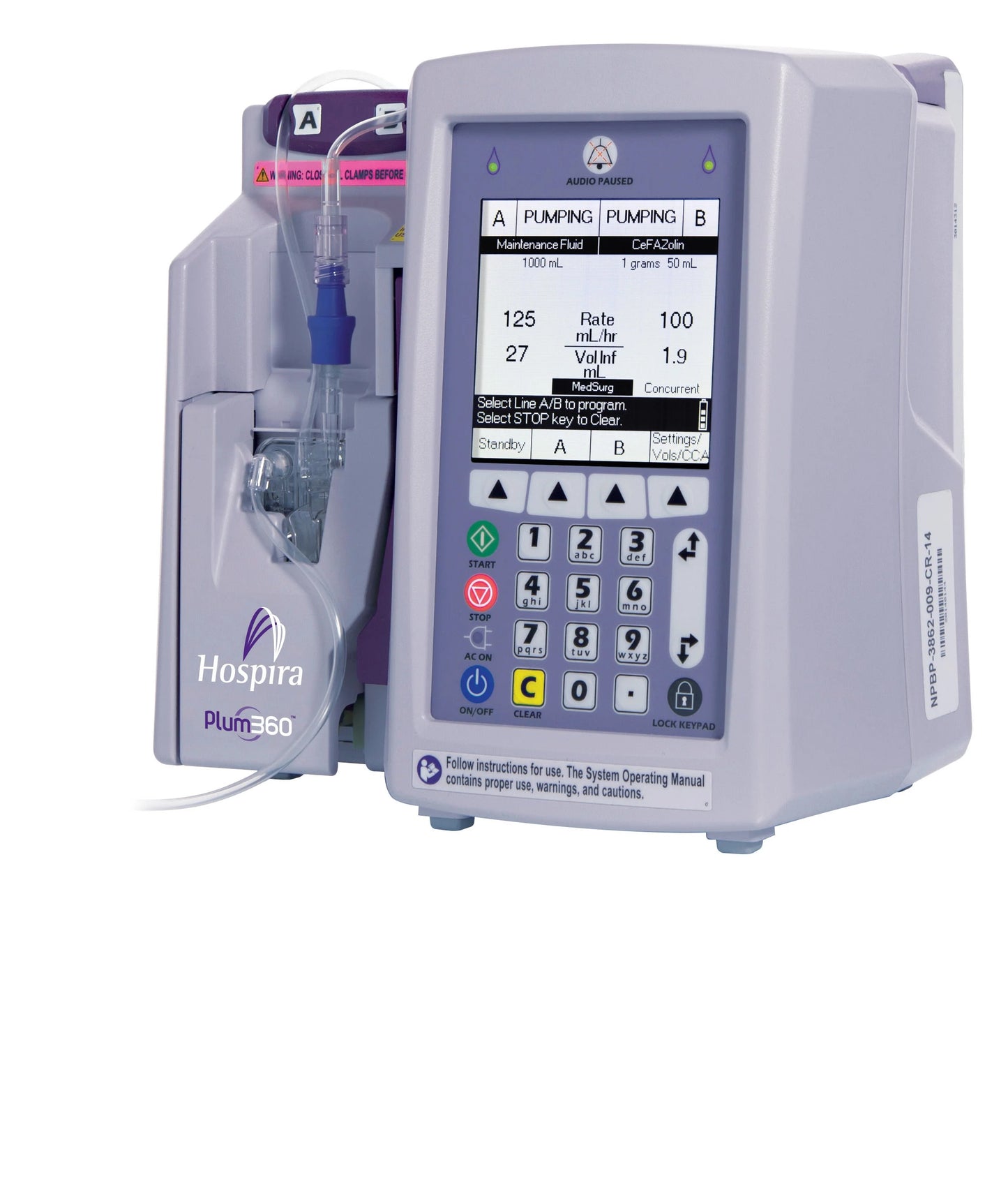
Continuous subcutaneous infusion pumps, commonly known as insulin pumps, are widely used for diabetes management. These pumps deliver a continuous supply of insulin to mimic the body's natural basal insulin secretion, providing more precise control over blood glucose levels.
Key features and components of Continuous Subcutaneous Infusion Pumps include:
- Reservoir or Cartridge: This is the part of the pump that holds the medication. It can be a syringe, cartridge, or reservoir, depending on the specific design of the pump.
- Infusion Set or Cannula: The infusion set is a tubing system that connects the reservoir to a small, flexible tube (cannula) that is inserted under the skin. The cannula is placed in the subcutaneous tissue, allowing for the gradual absorption of the medication.
- Pump Mechanism: The pump itself is responsible for controlling the rate of medication delivery. It can be programmed to deliver a continuous basal rate of medication, mimicking the natural release of substances in the body, and can also provide bolus doses as needed.
- User Interface: Most modern pumps come with a user-friendly interface, typically a screen with buttons, allowing the user to program and adjust the pump settings. Some pumps also have wireless capabilities for data transfer and remote monitoring.
Using your Continuous Subcutaneous Infusion Pump
1. Setting Up the Pump:
- Fill the reservoir with the prescribed insulin.
- Connect the infusion set to the reservoir.
- Insert the cannula under the skin in a chosen site (commonly the abdomen).
- Secure the infusion set in place.
2. Programming the Pump:
- Set the basal rate: the continuous, background insulin delivery.
- Program bolus doses for meals or corrections.
- Configure additional features, such as temporary basal rates.
3. Monitoring and Adjusting:
- Regularly monitor blood glucose levels using a glucose meter.
- Adjust pump settings based on factors like physical activity, meal plans, or illness.
- Use bolus doses for meals and corrections.
4. Changing the Infusion Set:
- Change the infusion set every 2-3 days or as recommended by healthcare providers.
- Dispose of used infusion sets properly.
5. Alarms and Alerts:
- Be aware of pump alarms and alerts.
- Address issues promptly, such as occlusions or low insulin levels.
6. Lifestyle Considerations:
- Pumps offer flexibility but require attention to prevent complications.
- Disconnect for activities like swimming or contact sports, with alternatives such as injections when necessary.
What are some Key Benefits for Patients with Diabetes?
Continuous Subcutaneous Infusion Pumps, also known as insulin pumps, offer several benefits for individuals with Diabetes. Some key advantages are:
- Insulin pumps provide a continuous basal rate, which mimics the body's natural release of insulin, helping to maintain more stable blood glucose levels throughout the day.
- Users can program different basal rates to match their body's changing insulin needs throughout the day and night. Bolus doses can be easily adjusted to accommodate variations in meal sizes, content, or physical activity levels.
- Fine-tuning insulin delivery can help reduce the risk of hypoglycemia (low blood sugar) compared to traditional insulin injection regimens.
- Insulin pumps eliminate the need for multiple daily injections, providing greater convenience. Users have more flexibility in their daily routines, mealtimes, and activities, as they can adjust insulin delivery based on their schedule.
- The continuous subcutaneous infusion of insulin can contribute to a better quality of life by minimizing the burden of managing diabetes. Fewer injections and a more flexible lifestyle can lead to improved psychological well-being.
- Many individuals using insulin pumps experience improved long-term glucose control, as reflected in lower hemoglobin A1c levels.
- The ability to administer precise bolus doses allows for better control of post-meal glucose levels.
- Insulin pumps can help reduce the variability of blood glucose levels, leading to a more predictable and manageable diabetes management routine.
- Many modern pumps have data storage capabilities, enabling users and healthcare providers to analyze trends and make informed adjustments to the insulin regimen.
- With continuous insulin delivery, there are fewer peaks and troughs in insulin levels compared to multiple daily injections, contributing to more stable glucose levels.




